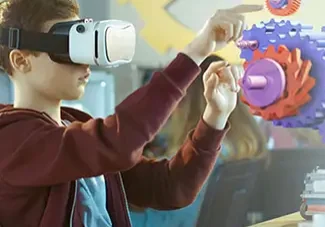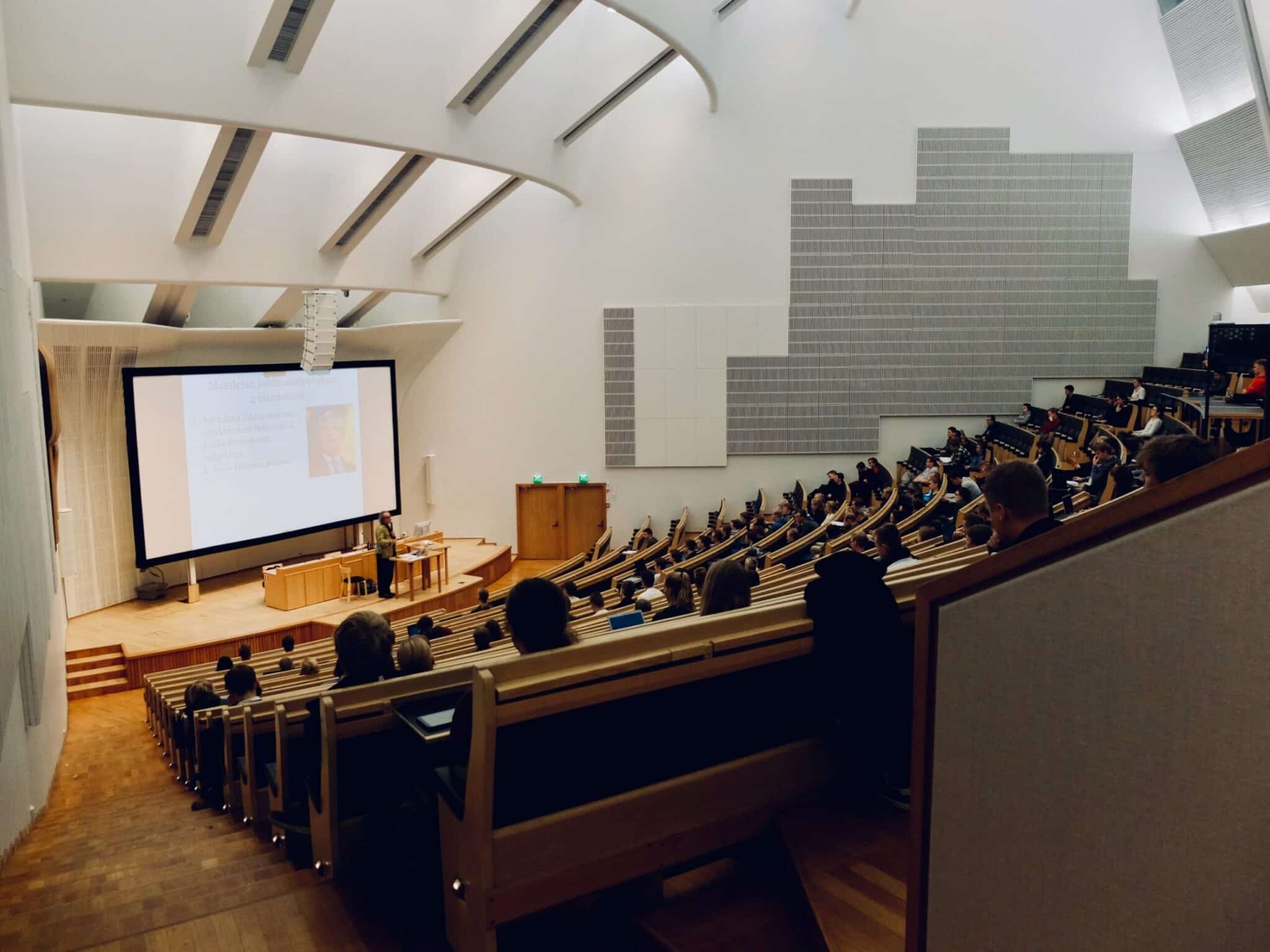What Does the Future of Higher Education Look Like?
Updated: June 19, 2024
Published: August 11, 2022

When asked to picture the future and its innovations, we usually hear descriptions of flying cars and updated technology. One rarely stops to wonder, what will the future of education be. As the education system continues to develop and transform due to modern studies, there has been an increasing focus on emphasizing student needs.
More than ever before, eyes are on educators to examine the positives of their work as well as to submit feedback on how to improve and develop the classroom experience. Especially in higher education, there are current changes being put in place. Analyzing the trends in higher education will help you answer the question: what does the future of higher education look like?

Source: Unsplash
Trends Shaping the Future of Education
Here’s a look at what can be expected from the future of education.
1. Online Education will Dominate
One of the greatest lessons we can learn from the Covid-19 pandemic is the great value of online education. As the National Center for Education Statistics reports, “84% of America’s undergrads were found to have had some or all of their classes moved to online-only instruction during spring 2020.” While the transition to online learning required an adjustment period, the benefits of online education have been brought to the spotlight. Trends in higher education point toward an increase in online classes. In 2019, Research and Markets suggested that by 2025 the online education market would reach an incredible $350 billion. In a recent study performed by the Statista Research Department, the number jumped to $400 billion by 2026.
2. Active Learning
The teaching style of lecturing is most frequent in colleges and universities. Through studying Ebbinghaus’s Forgetting Curve, it’s learned that students will forget talks that are dull and overly complicated. This is due to the seemingly obvious fact that the mind remembers facts that are meaningful and are presented in a clear manner. Not only that, students who actively participate in the learning process recall the information studied due to their higher level of engagement.
The definition of active learning is “an approach to instruction that involves actively engaging students with the course material through discussions, problem-solving, case studies, role plays, and other methods.” Additional examples would be group projects and debates. The goal of active learning is to appeal to student interests in order for them to learn on a higher level. Applying knowledge rather than listening to lectures is a great enhancement to the future of higher education.
3. Reduction in Standardized Exams
The debate is on the rise: do standardized tests truly prove competency level? The pervading argument is that the tests tend to benefit certain socio-economic groups rather than being a fair test for all classes. Admission quotas have been put in place in an attempt to fix this bias, yet it is only a recent trend in education that universities have chosen to reduce standardized exams.
Instead of regularizing standardized tests, schools have implemented formative assessments. This process includes formal and informal tests which focus on how to encourage student improvement. For instance, students may be asked to write a few sentences detailing a lecture’s main point or focus on class discussions. Both ways ensure that the teacher gains a grasp of his or her student’s understanding of the material. This is a significant improvement from merely evaluating a student’s knowledge based on an exam score.
4. Lower Costs/Tuition-Free
One of the biggest considerations for students who wish to get a degree is how much the program will cost. Not only are tuition prices at an all-time high, the costs of boarding, books, and food add quite a sum to the total costs of attending college or university. For some prospective students, the tuition cost alone is enough to bring doubts of attending college at all. While this sounds pretty discouraging, there is hope for the future of higher education. Tuition-free programs, like those offered at the University of the People, are becoming more popular. As the push for cheaper education gains momentum, chances are we’ll see an increase in affordable college programs.
5. International Student Recruitment
The current trend in higher education shows that universities are failing to get the international student body that they would like. Various surveys discovered that there is a decline in current international enrollments for two years in a row. Due to the COVID-19 pandemic, the total international student enrollment rate has dropped by 16% as of 2020. Well, there is a debate for what is the cause, the main reason could possibly be the political environment in the US and the restrictive policies on US visas. Trends in higher education show that universities and colleges will begin to increase their international student recruitment in order to gain a more diverse student body.
6. Competency-based Education
As a 2019 American Institutes for Research study shows, 51% of institutions have adopted competency-based education with an additional 23% reporting their interest in this approach to learning. CBE allows students to spend less time with subjects they have already mastered and time to focus on more complex or new topics. This model of learning allows full-time employees or individuals with other responsibilities to gain an education. This program is ideal for out-of-the-box learners and is shown to have better completion rates than other programs. The future of education indicates that colleges and universities will cater to different learning styles in order to provide opportunities to a wider spectrum of students.

Source: Unsplash
Back to the Future
It all sounds amazing, right? Learning about the trends in higher education gives us an optimistic view of the future. If only we could time travel right now and get us to the point where student needs are better fulfilled.
Changes aren’t only being made to external education, though. There has been an increase in schools helping students with mental health issues. Institutions have become aware that in order for their students to thrive, they need to be physically and mentally well. This change is happening right now! So there’s no need to be mopey that things aren’t perfect yet. We are headed in the right direction, and it’s only the beginning!
